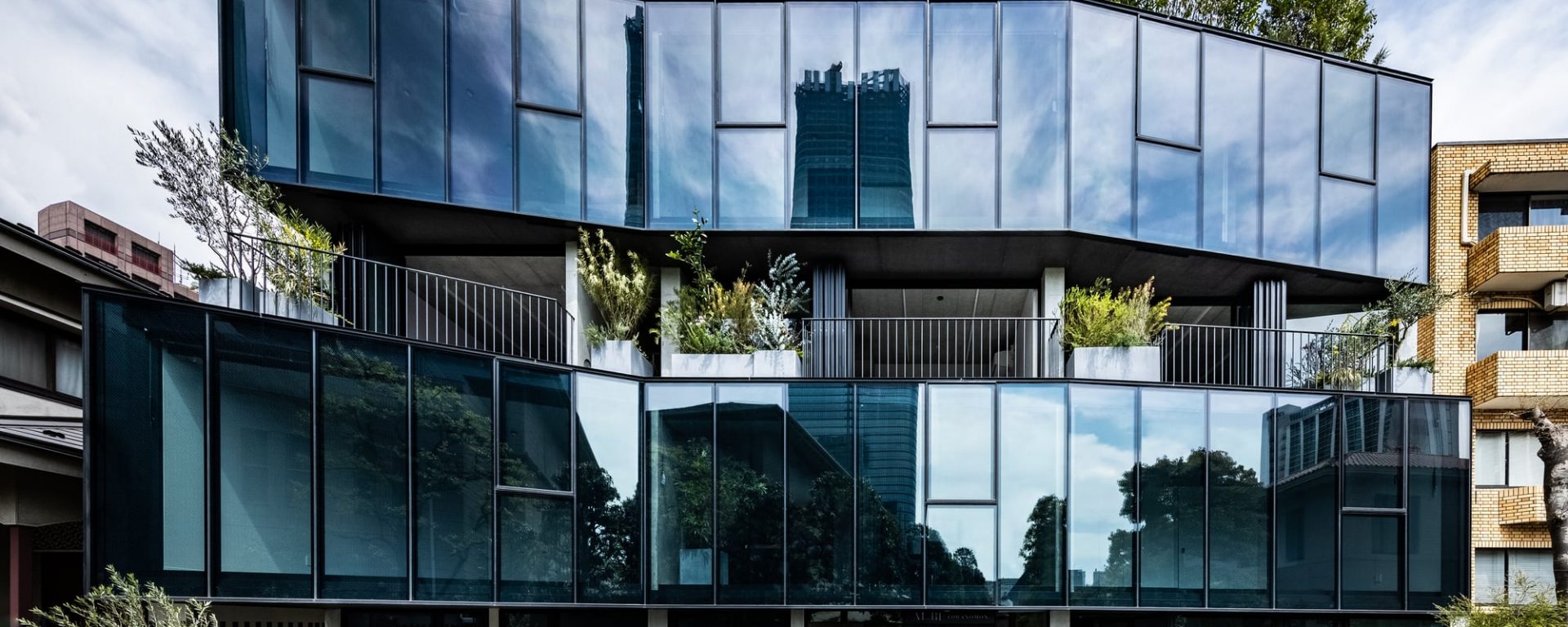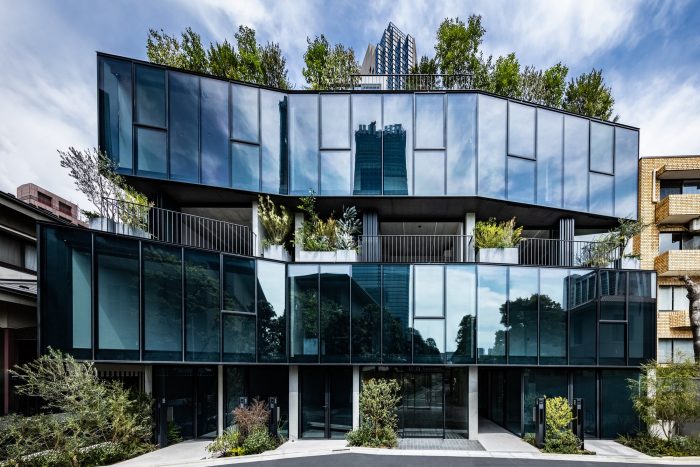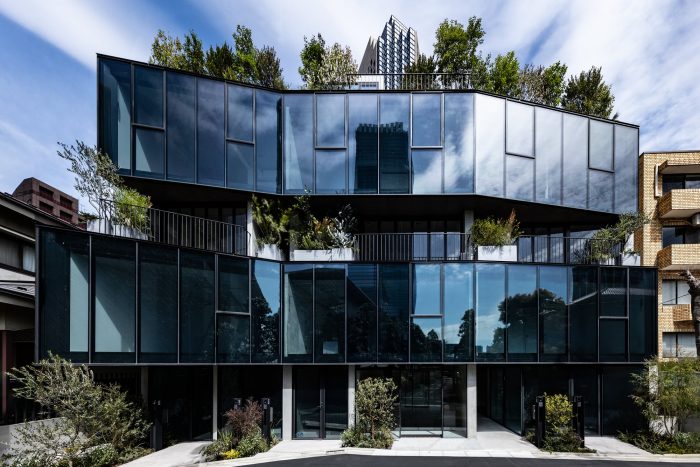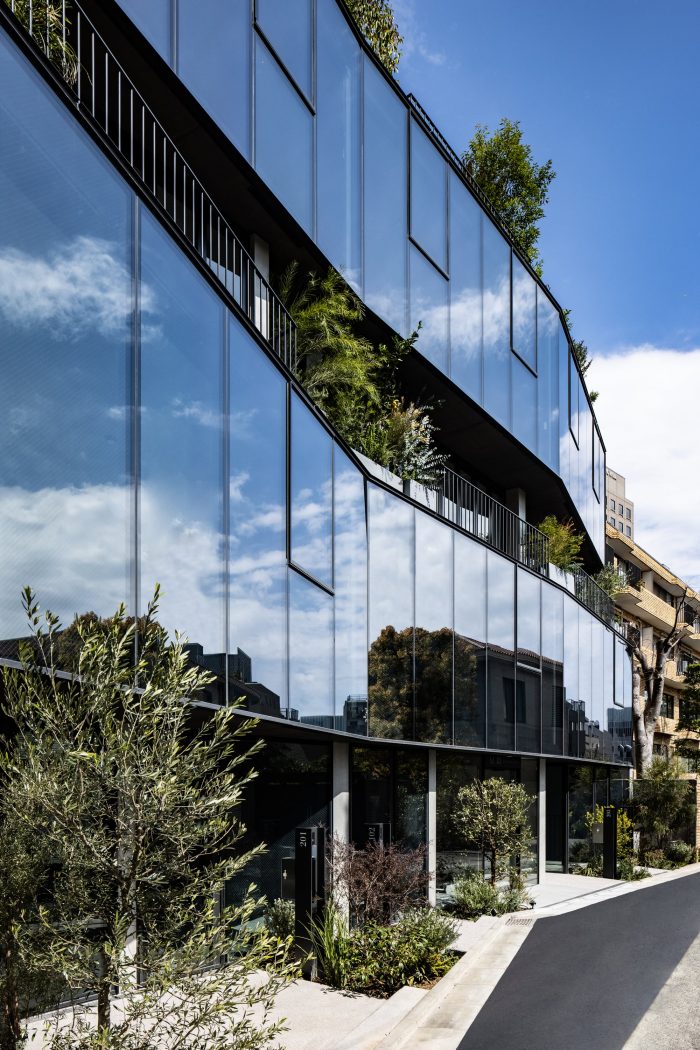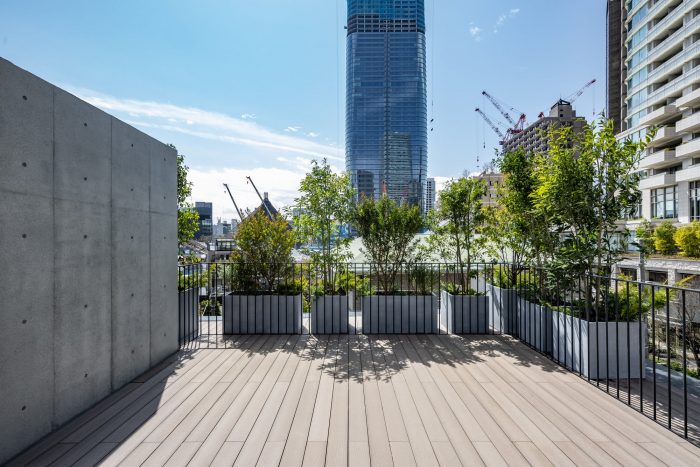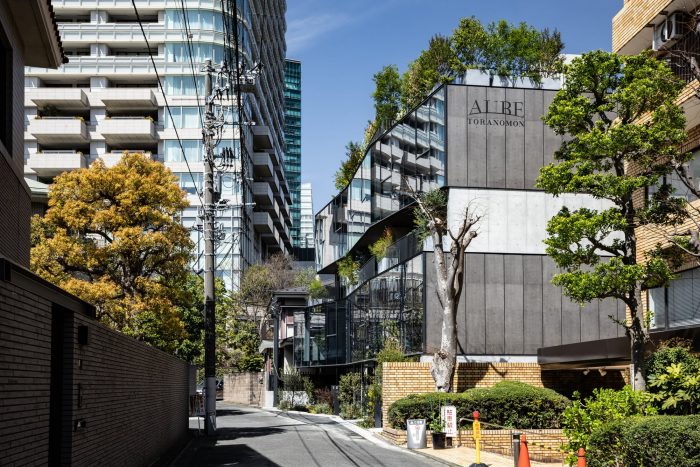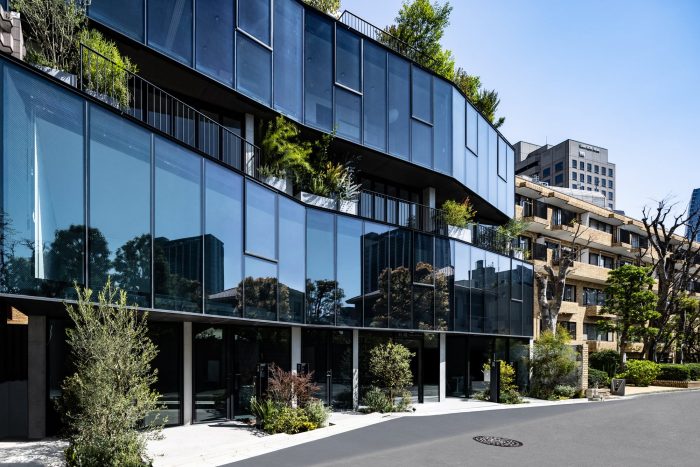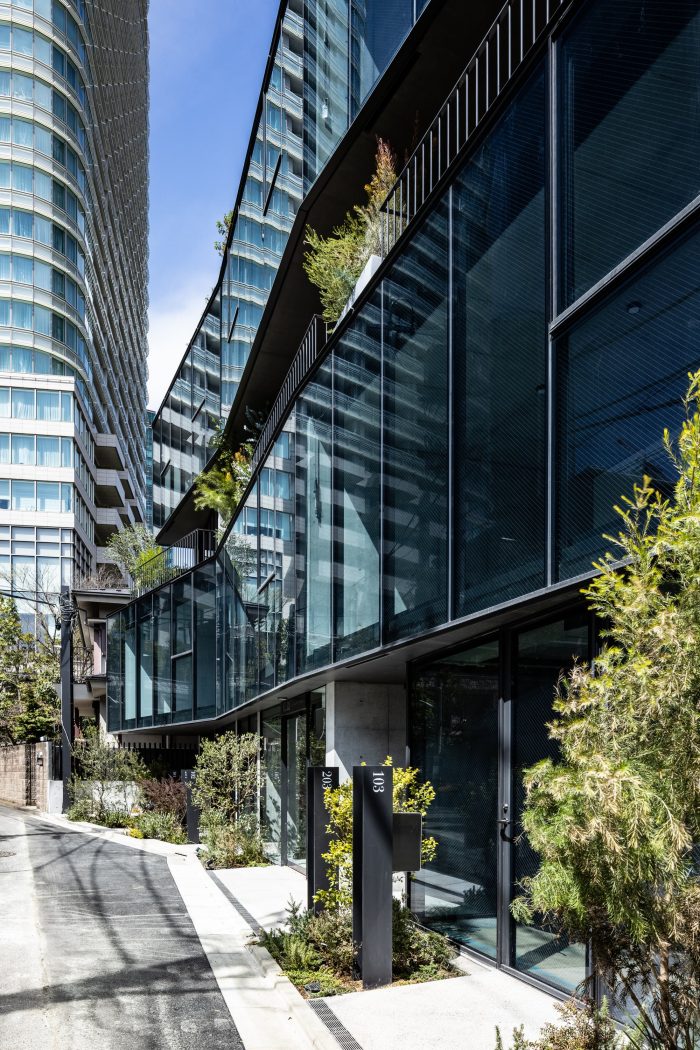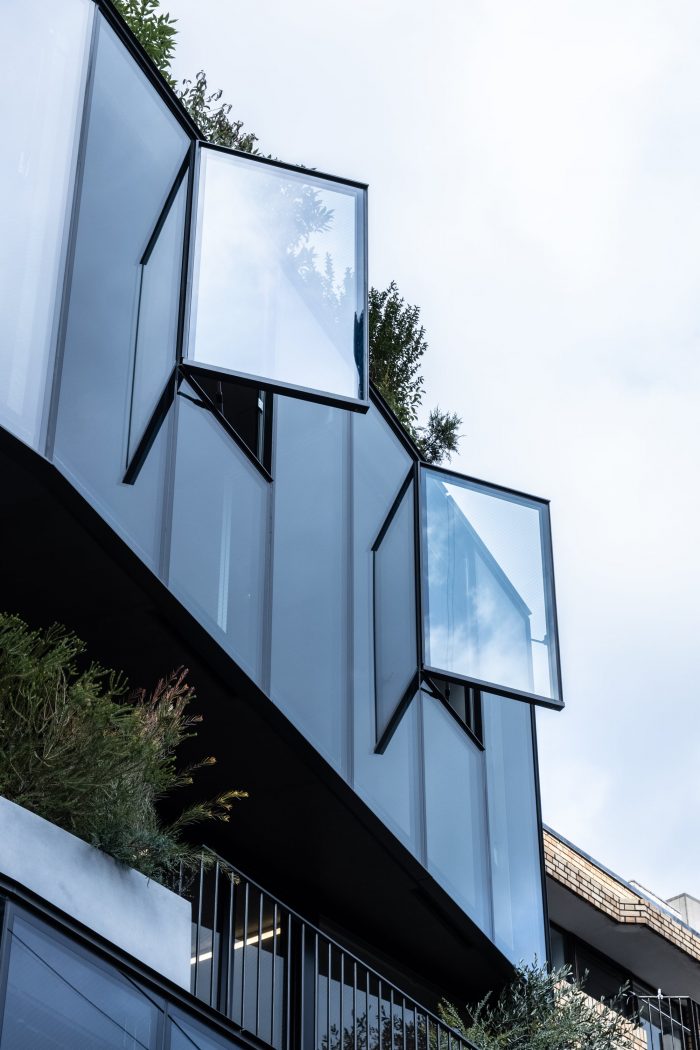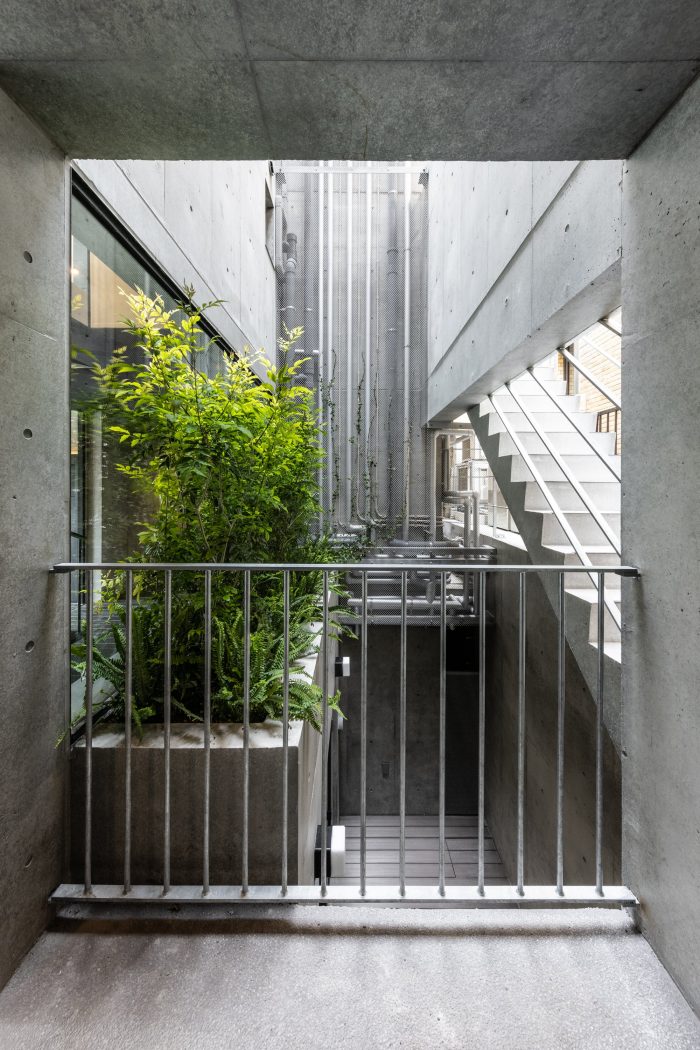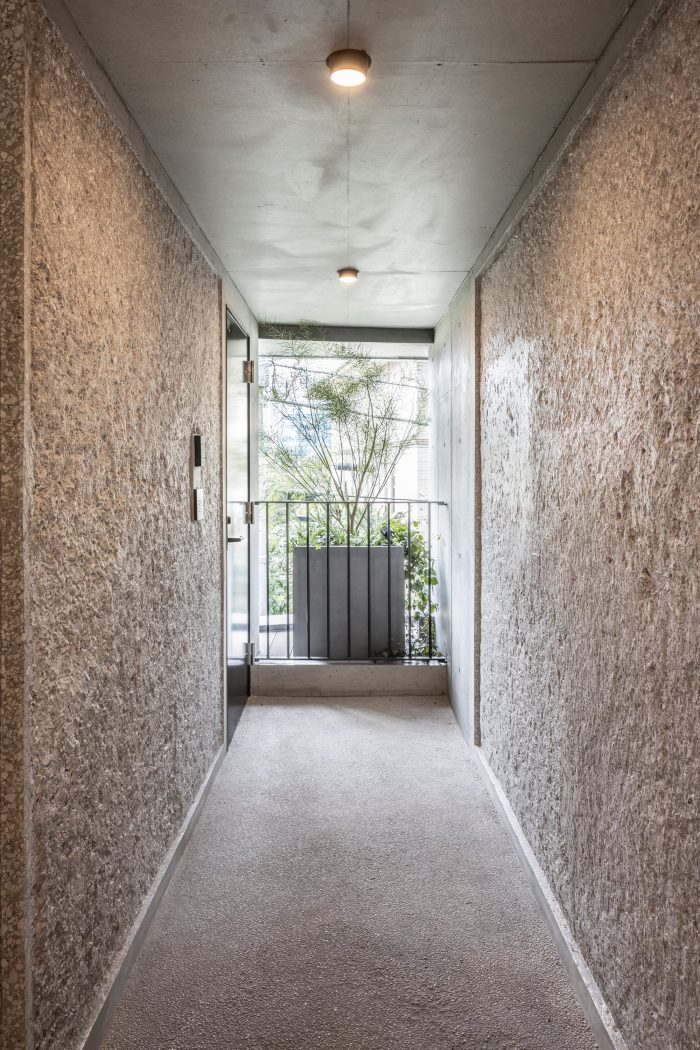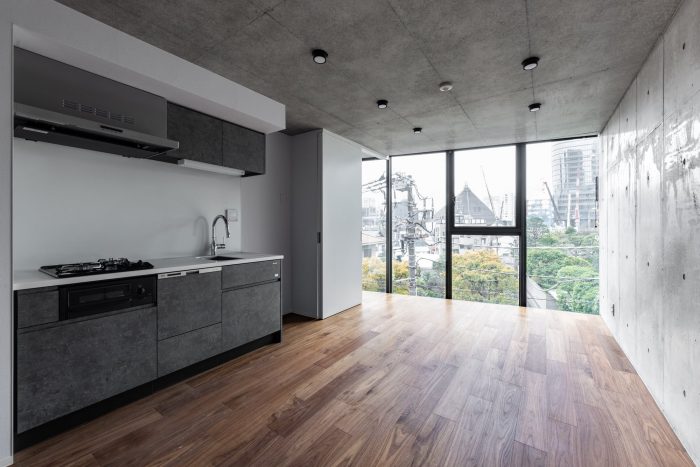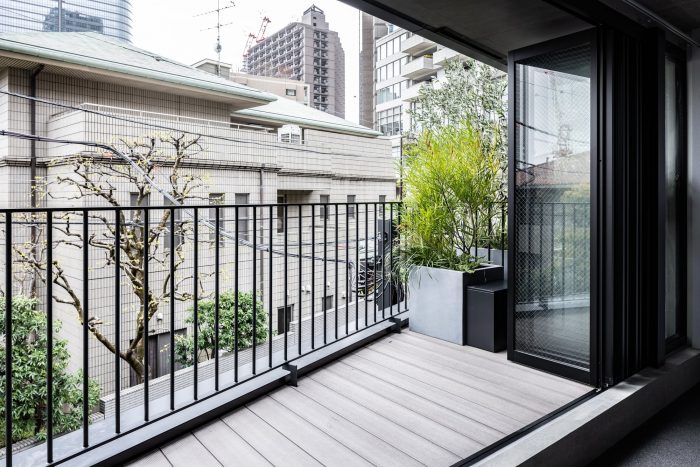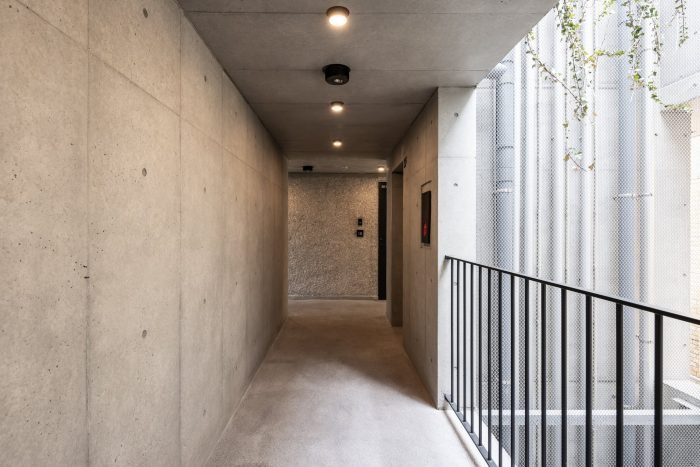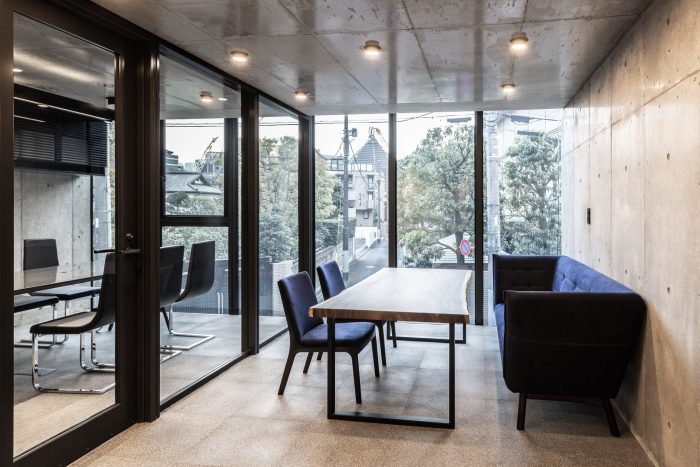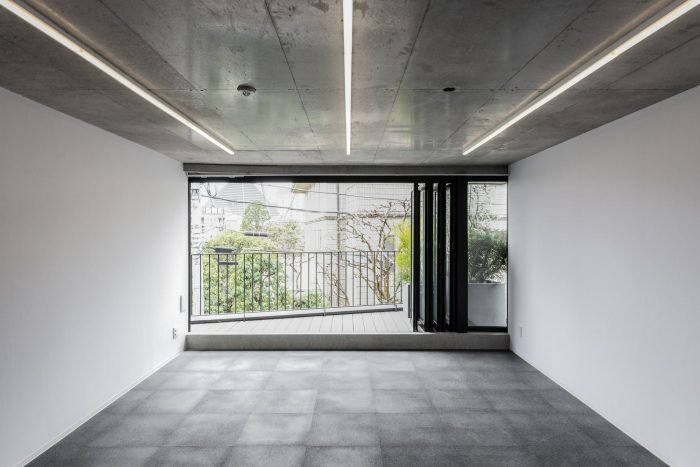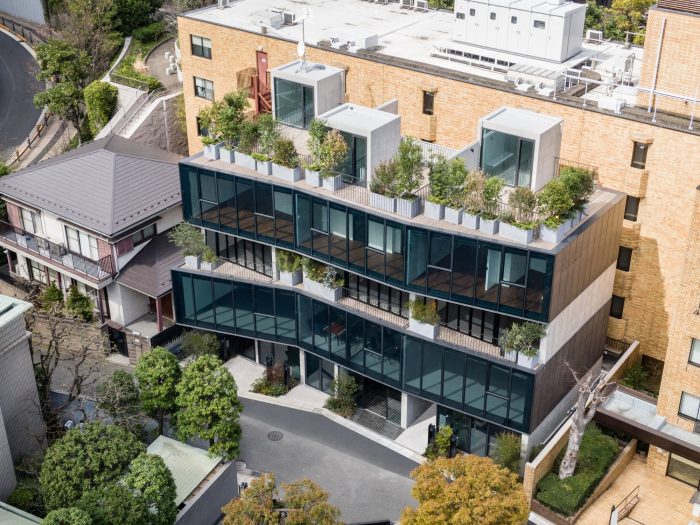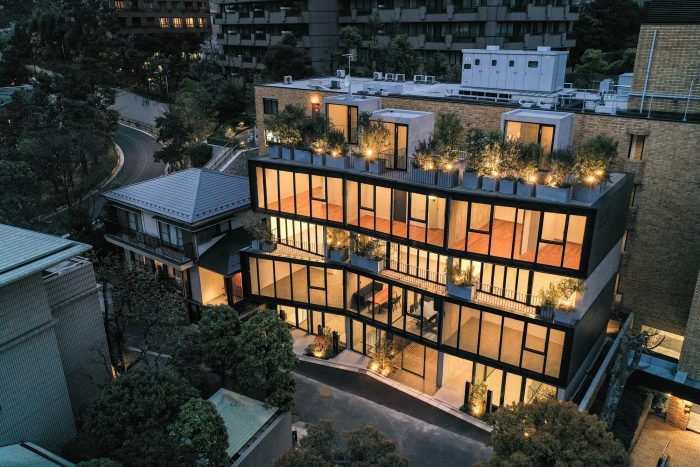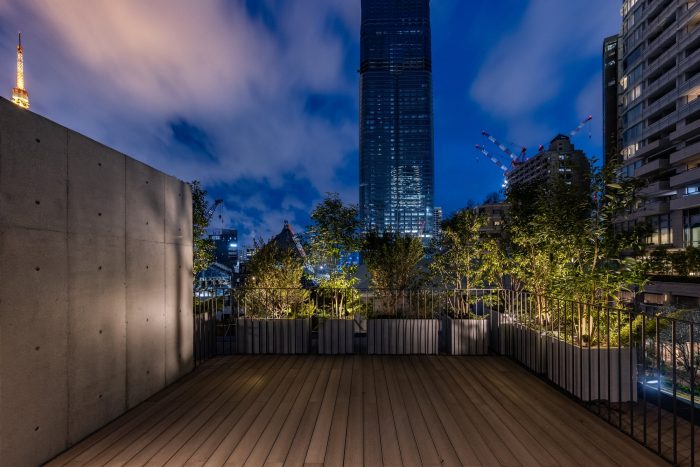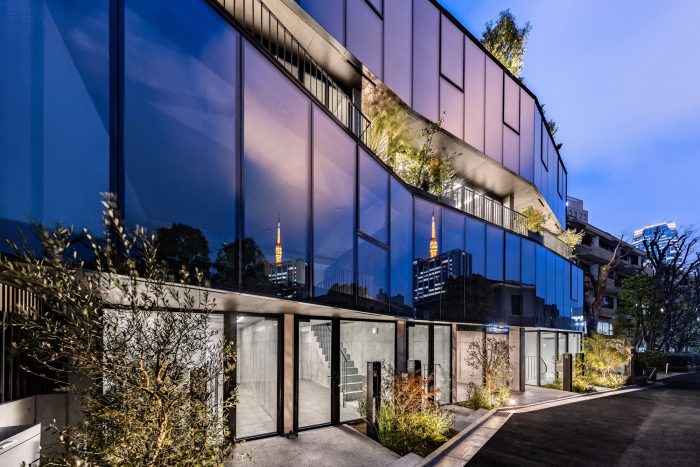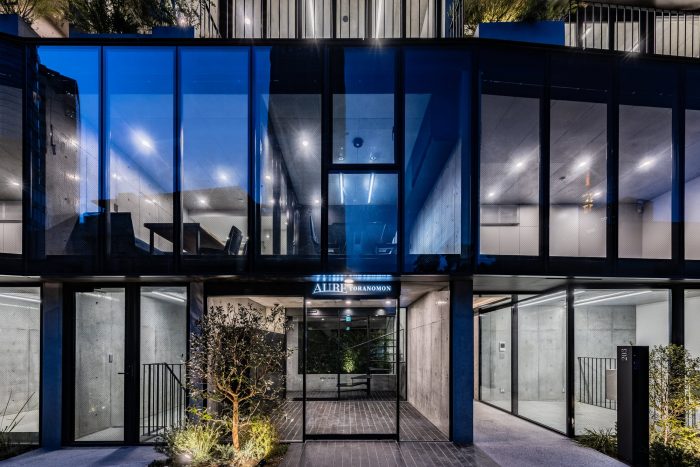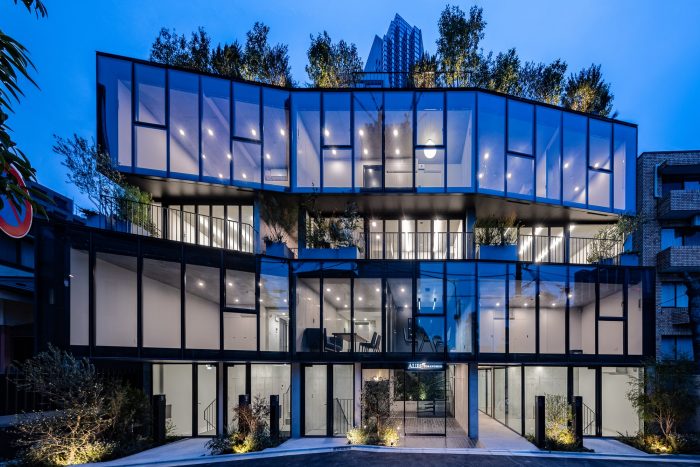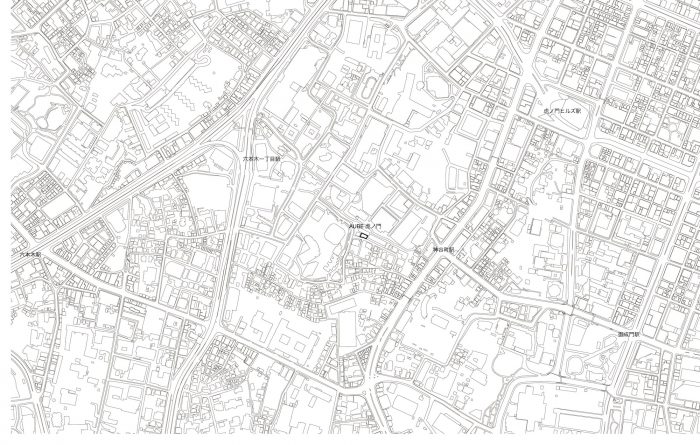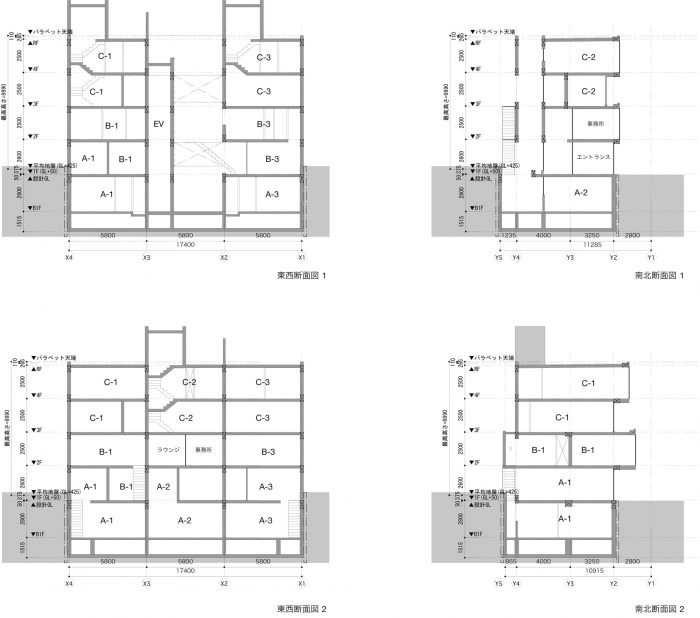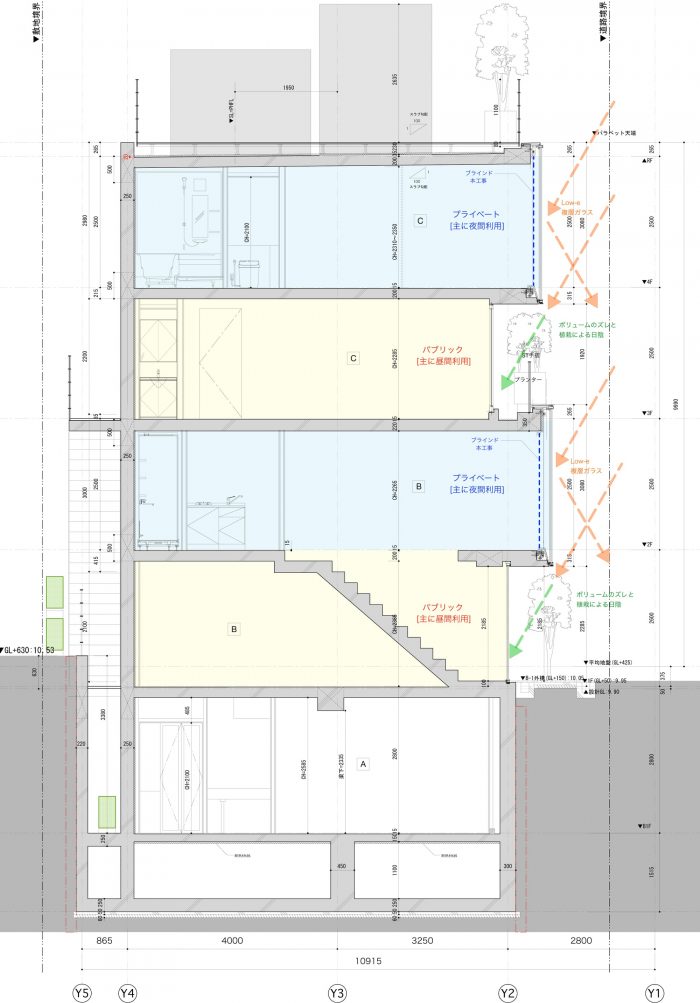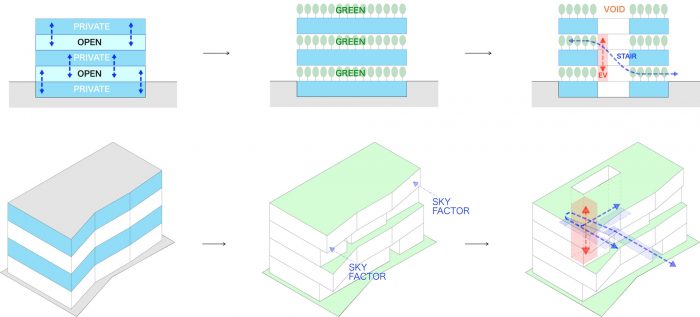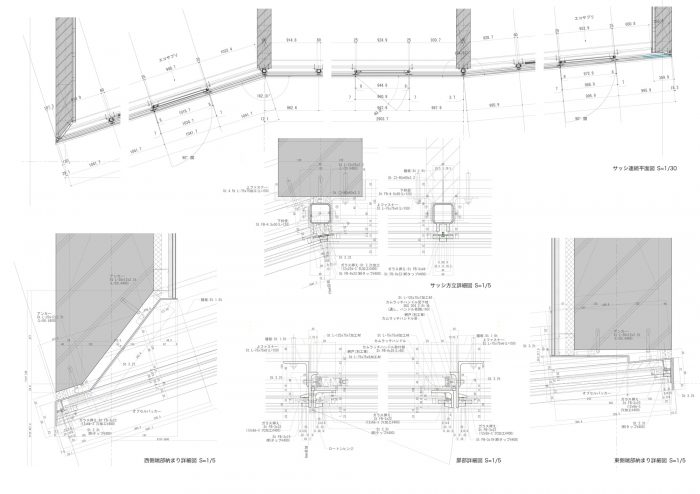AUBE Toranomon位于东京市中心的一个区域,那里正在进行城市改造,并正在建造许多高楼大厦。然而,在该地块附近有许多低层建筑。建筑师的设计允许各种类型的生活方式在这个出租住宅楼里进行,以创造居民和城市之间和谐的社会联系。
The AUBE Toranomon is situated in an area in downtown Tokyo, where urban renewal is ongoing, and many high rises are being built. However, in the close vicinity of the site are found many lower buildings. The architect designs to allow various types of lifestyles in this rental residential building to create a harmonious social connection between the residents and the city.
该项目在COVID-19大流行之前开始。生活方式的急剧变化,尤其是工作方式,如在家工作的人越来越多,生活空间和工作空间的边界越来越模糊,涉及到好的和坏的方面。减少通勤时间和环境负荷当然是有益的,同时也使隐私与工作环境、物理和空间问题难以分开。建筑师与客户一起推出了一系列租赁商业空间”ESCALIER”,在经济效益和更好的工作环境之间提供一个良好的平衡,以一种很好的方式适应和连接到附近。这个住宅项目旨在通过对城市非常开放来丰富生活环境,为社会做出贡献。项目的名字 “AUBE “来自于一个法语单词,意思是黎明。建筑师希望AUBE能照亮人们和城市。
The project began before the COVID-19 pandemic. Drastic changes in lifestyle, especially the workstyle such as working at home increasing and the border between the living space and the working space much ambiguous, involve good and bad aspects. Reduction in both commuting time and environmental loads is certainly beneficial while making it difficult to separate privacy from a working environment, and physical and spatial issues. The architect, together with the client, has introduced a series of rental commercial spaces ”ESCALIER” to provide a good balance between economic efficiency and a better working environment in a way well adapted and connected to the neighborhood. This residential project aims to enrich the living environment by being very open to the city to contribute to society. The name of the project “AUBE” comes from a French word, which means dawn. The architect hopes that the AUBE will light up the people and the city.
在公寓的每个单元中,公共空间和私人空间都有明确的划分,以便为各个住户的需求提供灵活性。该建筑由三种类型的复式公寓组成,分别位于地下室/一楼、二楼/三楼和四楼/天台。每套公寓的入口都位于一楼和三楼。在每套公寓的入口空间内,有一个空间,可以作为客厅,也可以作为远程工作的空间,或作为工作室或爱好室,甚至任何一种用途,不一定需要隐私。
In each unit of the apartment, public space and private space are clearly divided to provide flexibility for the needs of the individual tenants. The building consists of three types of duplex apartments, which are on the basement/first floor, the second/third floor, and the fourth/roof floor. The entrance of each apartment is located on the first floor and the third floor. Inside the entrance space of each apartment, there is a space, which can be used as a living room but also as a space for remote working or as a studio or a hobby room, or even any kind of usage, which does not necessarily require privacy.
每个复式公寓内的楼梯通向一个具有私人性质的空间。该单元有一个箱中箱的结构。为了提供与城市即外部世界的联系,并帮助传递信息,一楼的入口门采用透明玻璃门,三楼采用宽大的折叠门。在二楼和四楼作为私人空间,立面采用玻璃幕墙封闭,与周边其他高层建筑相协调。因此,公共空间和私人空间的层次出现在立面上。当封闭的私人楼层扩展到建筑覆盖率的极限时,公共楼层有前面的花园和阳台,那里的绿色植物代表了城市中绿色植物的序列。
The staircase within each duplex apartment leads to a space of a private character. The unit has a box-in-box structure. To provide a connection to the city i.e., the outer world, and to help transmit information, the entrance door adopts a transparent glass door on the first floor, and a wide-open folding door on the third floor. On the second and fourth floors as a private space, the façade is closed with a glass curtain wall, which harmonizes with other high buildings in the neighborhood. As a result, layers of public space and private space appear on the façade. While the closed private floor expands to the limit of the building coverage ratio, the public floors have front gardens and balconies where the green plants represent the sequence of the greenery in the city.
通过沿中庭的楼梯或电梯可以到达三楼的公共空间,这个空隙空间为公寓提供了光线和风。该建筑采用墙体式框架结构,因此在内部没有出现突出的情况。公寓中间的结构墙,从地下室到二楼,也是空间的一个重要隔断。由于遮阳的规定,天花板的高度被限制在2.5米,但梁被整合到墙壁中,使其不可见,通往街道一侧的开口有平坦的预应力混凝土梁,不影响室内。
By using a stair or an elevator along the atrium you can reach the common space on the third floor, and this void space provides light and wind to the apartments. The building has a wall-type frame structure so that no protrusion occurs in the interior. The structural wall in the middle of the apartment, from the basement to the second floor, serves as an important partition for the space as well. Due to the shade regulation, the ceiling height is limited to 2.5m but the beams are integrated into the walls to make them invisible, and the opening to the street side has flat pre-stressed concrete beams which do not bother the interior.
从地片的形式来看,建筑的正面被分为三个单元。东侧的单元因为紧急疏散空间而被折叠,第四层则因为天空系数的规定而后退。为了突出二楼和四楼的体积,幕墙是无窗帘的。建筑师设计了一个休息室和一个会议室,作为居民和他们的客人的交流空间。这是一个项目,它实现了丰富的生活环境,同时,它为居民提供了一个机会,让他们在居住在建筑内的同时与社会建立联系。
From the form of the land piece, the frontage of the building is divided into three units. The unit on the east side is folded because of the emergency evacuation space and the fourth floor is set back due to the sky factor regulation. To highlight the volume on the second and the fourth floors the curtain wall is sash-less. The architect designs a lounge and a meeting room as a communicative space for the residents and their guests. This is a project, which realizes a rich living environment and at the same time, it offers an opportunity for the residents to become connected to society while they live inside the building.
Architects: ETHNOS
Area : 630 m²
Year : 2022
Photographs :Keishin Horikoshi / SS Inc.
Manufacturers : Fuji Sash
Lead Architect : Tatehito Sakruai
Client : REAL PARTNERS Co.,Ltd.
City : Minato City
Country : Japan

